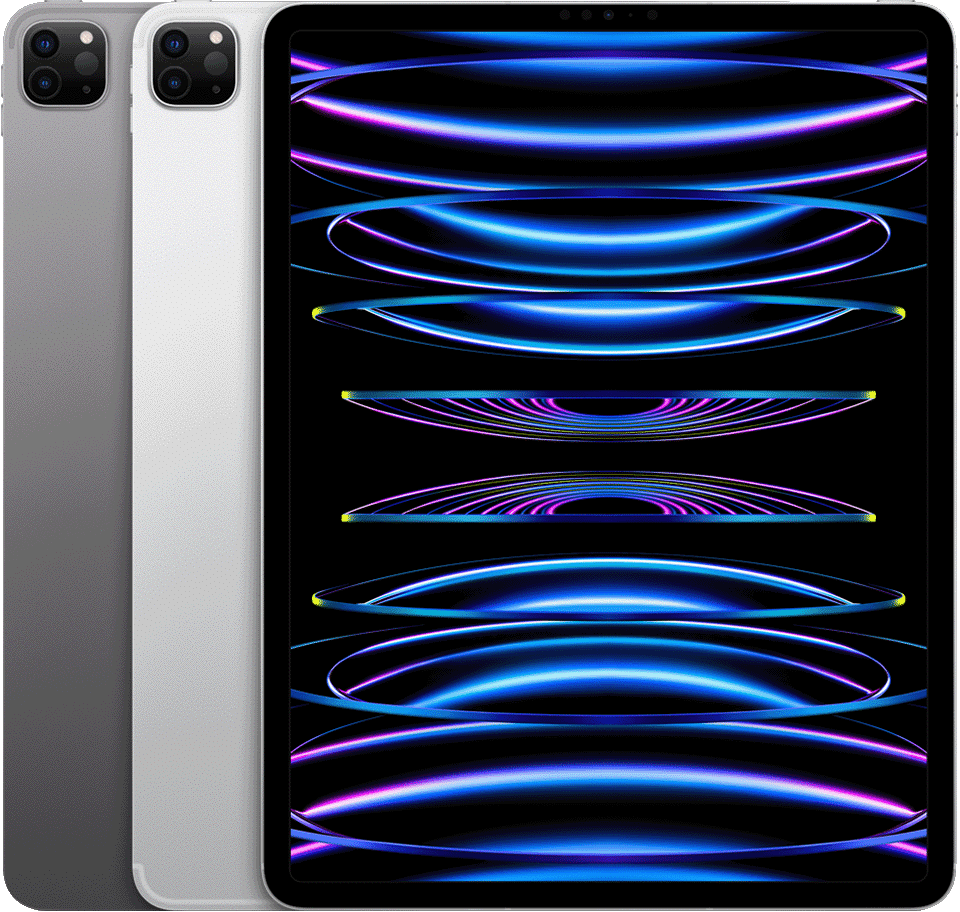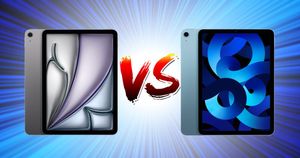
Apple recently confirmed it will host an event on May 7th this year. The logo prominently features the Apple Pencil, suggesting a focus on iPads, which are long due for an overhaul. We anticipate the announcements will introduce newer iPad Air and iPad Pros.
In today’s world, Apple’s iPads offer greater portability than laptops and can even replace smartphones for those who prefer watching content on a larger screen. However, when Steve Jobs introduced this tablet 14 years ago, its use case was entirely different. So, let’s explore how Apple’s iPad has evolved over the years.
The Original iPad: The First Tablet From Apple
The original iPad was unveiled by Steve Jobs on January 27th, 2010, at the Yerba Buena Center in San Francisco. It featured a 9.7-inch screen, a 10-hour battery life, and a 1GHz A4 processor. It also had a home button at the bottom of the face and thick bezels. The Home Button would remain a notable part of the iPad’s design for several years. Apple only phased it out with the 9th Gen iPad launched in 2021.
Notably, the original iPad weighed more and was thicker than subsequent releases. There were 16GB, 32GB, and 64GB of storage variants. The iPad also ran on iOS, like the iPhone’s software system, and could run apps from the App Store.

Apple’s primary aim was to upscale the iPhone’s multi-touch interface for use on a larger screen, thereby indirectly challenging the dominance of laptops. However, achieving this objective required several customisations that were lacking at the time.
Additionally, the iPad was positioned as a viable alternative for consuming content traditionally found in books, newspapers, and magazines. It was an ideal device for content consumption. And this move inadvertently pitted Apple against Amazon’s e-book offerings. On launch day, Apple successfully sold 300,000 units of the iPad, with over one million shipped within the first month. Before the release of the subsequent model, nearly 19 million units had been sold.
So far, Apple has introduced 10 generations of the baseline iPad. However, the iPad lineup has become more complicated, diversifying into the Pro, Air, and Mini segments.
The iPad mini: Lighter, Thinner…and Faster?
The first generation of the iPad mini debuted on October 23rd, 2012, two and a half years after the Original iPad’s launch. In 2012, we saw the simultaneous release of the Google Nexus 7, the Microsoft Surface, and the Samsung Galaxy 10.1. It was a time when smaller tablets were very popular.
The original iPad Mini had a dual-core A5 processor, up to 64GB of storage, and a 7.9-inch display. Its specifications closely mirrored those of the iPad 2 but in a smaller, lighter package. Its solid and rugged design offered improved portability and was available in black and white.

Subsequently, the iPad mini 2 (2013), mini 3 (2014), and mini 4 (2015) were launched. The iPad mini was quietly discontinued after these releases, as iPad sales had declined. Apple ceased any new iPad mini models, but after a gap of four years, the iPad mini 5th generation was introduced in 2019.
The latest iteration, the iPad mini 6, was launched three years ago in 2021 and featured a bumped-up 8.3-inch display. It features an all-screen design, 5G capability, an A15 Bionic chip, and a USB-C port for faster connectivity. Additionally, it excels in handling demanding graphic tasks and heavy games. Who would have thought that, nine years later, the mini version could perform all the tasks of a laptop? Will Apple introduce an iPad mini again? We will have to wait and see if the mini turns out to be the ‘one more thing’ on May 7.
The iPad Air: Apple’s Lightest Pa(d)ckage
The iPad Air was launched in late 2013, aiming to offer more power in a smaller, lighter device. Measuring just 7.5mm thin and 22% lighter than the iPad 2, it featured a 9.7-inch Retina display, storage options up to 128GB, and an A7 chip with 64-bit architecture. Notably, Apple also reduced bezels on this model.
With its A7 processor, the iPad Air brought new possibilities for productivity apps. Despite its larger battery than the iPad 2, it maintained a remarkably slim and lightweight design. Following the release of the 1st generation iPad Air, subsequent models were introduced: the Air 2 (2014), Air 3 (2019), Air 4 (2020), and iPad Air 5 (2022).

When paired with accessories like a Magic Keyboard case and an Apple Pencil, the iPad Air 5th generation shares similarities with the iPad Pro. It features a 10.9-inch Liquid Retina display, improved camera capabilities, and the M1 chip, which offers enhanced performance compared to the A15 Bionic chip. If your needs revolve around email, note-taking, design tasks, and casual gaming, the iPad Air is meant to be a suitable alternative to the iPad Pro.
The iPad Pro: For the Professionals
The first-generation iPad Pro hit the market on September 9th, 2015. It came in two display options. The first had a 12.9-inch Retina display. Apple later introduced the 9.7-inch variant of the iPad Pro as well in March 2016. More importantly, the iPad Pro supported the Apple Pencil, which was introduced with the 12.9-inch variant.
The iPad Pro offered storage options up to 256GB and was the first iPad to come with LPDDR4 RAM. It was powered by the A9X chip with 64-bit architecture. Its focus on accommodating creative work, especially drawing and drafting with the Apple Pencil, blurred the line between tablet and canvas.

In the following years, Apple expanded the iPad Pro line-up, introducing 10.5-inch and 12.9-inch 2nd generation models in 2017. In 2018, it released the iPad Pro 3rd generation (11-inch), boasting a revamped design, Face ID, and a redesigned Apple Pencil, positioning it as a potential laptop replacement with the addition of the Smart Folio Keyboard.
Subsequent years saw Apple introduce the iPad Pro (11-inch) 2nd generation and iPad Pro (12.9-inch) 4th generation in 2020, followed by the iPad Pro (11-inch) 3rd generation and iPad Pro (12.9-inch) 5th generation in 2021. With the 5th generation, Apple also switched to its M-series processors for the iPads.
In 2022, Apple launched the iPad Pro (11-inch) 4th generation and iPad Pro (12.9-inch) 6th generation powered by the M2.

The iPad Pro 6th generation, unveiled in 2022, boasted 5G capability, support for the Apple Pencil (2nd generation), an upgraded camera, and a Liquid Retina XDR display with storage options of up to 2TB. It is powered by the impressive M2 chip. It excels in handling creative tasks such as video editing and graphic design on the go. However, its battery life remains a drawback, limited to only 10-11 hours.
But there were no new releases in 2023. So yes, 2024 will likely see new variants of the iPad Pro on May 7 powered by the M3 chipset. The iPad Pro series has been the most confusing, with frequent updates and various model sizes and features. Despite this, the evolution of the iPad Pro series reflects significant advancements in technology and usability over the years.
Apple May 7 Event: What’s Next?
Reports claim the upcoming iPad Pro, expected in May, may feature an OLED display. We can also anticipate the release of a new iPad Air and an updated version of the Apple Pencil.
Regarding the iPads, we expect to see slimmer and lighter models. Apple could also make them more like Macs by adding support for additional accessories and enhancing iOS flexibility. However, the overarching question remains: what direction will the iPad take next?















